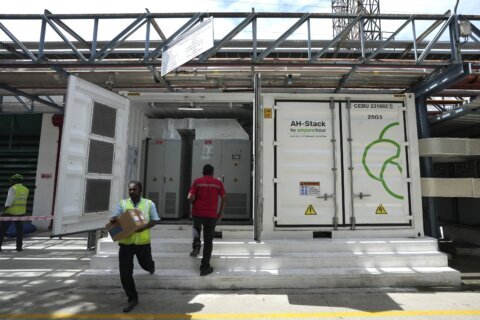A checking account is the cornerstone of the financial lives of many Americans. People primarily use a checking account to pay household expenses such as mortgage payments and utility bills. The Federal Deposit Insurance Corp. reports that over 95% of U.S. households had a checking or savings account at a bank or credit union in 2021. Find out how a checking account works, the different types available, and how to choose the right one for you.
[Read: Best Checking Accounts.]
What Is a Checking Account?
A checking account helps people manage their finances and can be opened at a traditional bank, online bank or credit union. Checking accounts can be used for a variety of purposes, including:
— Paying for expenses by debit card or check.
— Making purchases online or in person.
— Depositing paychecks, Social Security benefits and other payments.
— Depositing or withdrawing cash.
— Sending or receiving cash via electronic transfer or wire transfer.
How Does a Checking Account Work?
In general, a checking account lets you write checks and use a debit card connected to the account. You can write a paper check for purposes such as paying bills, making purchases and giving monetary gifts.
Meanwhile, you can use an electronic check — a digital version of a paper check — to deliver online payments. A common type of e-check is a direct-deposited paycheck. You also can typically make automated electronic payments (such as those for bills) through your checking account.
A debit card issued with a checking account allows you to make purchases without writing paper checks or e-checks. It’s a popular substitute for cash or a credit card. Aside from being able to make online or in-person purchases or payments, a debit card offers the ability to deposit or withdraw cash at an ATM. You can also generally get cash from your checking account when you use a debit card for an in-store purchase.
Unlike some savings accounts, checking accounts don’t limit the number of withdrawals you can make each month.
[See: Best High-Yield Savings Accounts]
How to Open a Checking Account
Generally, you can open a checking account at a financial institution’s branch or on its website. Online banks also offer online applications to open an account.
To set up a checking account, you’ll usually need to provide information including:
— Your Social Security number
— One or two government-issued IDs, such as a driver’s license or passport
— Proof of your address, such as a utility bill or mortgage statement
You also might be required to provide a minimum opening deposit ($25, for example). However, some financial institutions let you open a checking account with no minimum deposit. Keep in mind that you may need to maintain a minimum daily balance to avoid monthly maintenance fees.
It’s also worth noting that when you apply to open a checking account, the financial institution may review your banking history on ChexSystems, which tracks things like unpaid banking fees and overdrafts.
[Read: Best CD Rates.]
Types of Checking Accounts
The types of available checking accounts include:
— Traditional checking account: A traditional checking account usually features standard offerings, such as the ability to write checks and to use a debit card for in-person purchases, online payments and ATM deposits and withdrawals.
— Interest-bearing checking account: Unlike a traditional checking account, an interest-bearing checking account allows you to earn interest on the money in your account.
— Premium checking account: A premium checking account comes with all the products and services you’d find with a traditional checking account, but it also provides perks such as fee waivers, free money orders and lower loan interest rates.
— Senior checking account: Tailored to customers over a certain age, a senior checking account is much like a traditional checking account. However, it might offer special benefits like fee waivers and unlimited check writing.
— Student checking account: As its name suggests, this account type is geared toward students. It normally offers basic products and services, including check-writing privileges and debit cards. This type of account is limited to students in certain age groups, such as 13 to 24, and might not charge fees.
— Business checking account: A business checking account works similar to a personal checking account but addresses the needs of businesses. Unlike a personal checking account, a business checking account might offer several debit cards for employees to use. It also might charge higher fees and have higher requirements for minimum balances.
— Checkless checking account: A checkless checking account doesn’t let you write checks and doesn’t provide overdraft protection, but it does incorporate features such as debit cards and digital payments.
How to Choose a Checking Account
Once you’ve decided to open a checking account, the next step is to figure out which financial institution you’d like to house your account. Here are 10 questions to ask yourself when considering checking account options at various institutions:
1. Will you be charged any fees?
2. Can you get any of those fees waived?
3. Will you be required to maintain a minimum account balance?
4. What is the ATM access in your area and nationwide?
5. Do you want access to a branch or will online-only services suffice?
6. Are online bill-paying services available?
7. Have customers made complaints to the Consumer Financial Protection Bureau ?
8. Does the financial institution offer a mobile app?
9. Are the financial institution’s deposits federally insured?
10. What other products and services does the financial institution provide that you may want in addition to a checking account?
More from U.S. News
How Much Money Should You Have in Checking?
6 Banks That Offer Bonuses for Opening an Account
What Is a Checking Account? originally appeared on usnews.com







